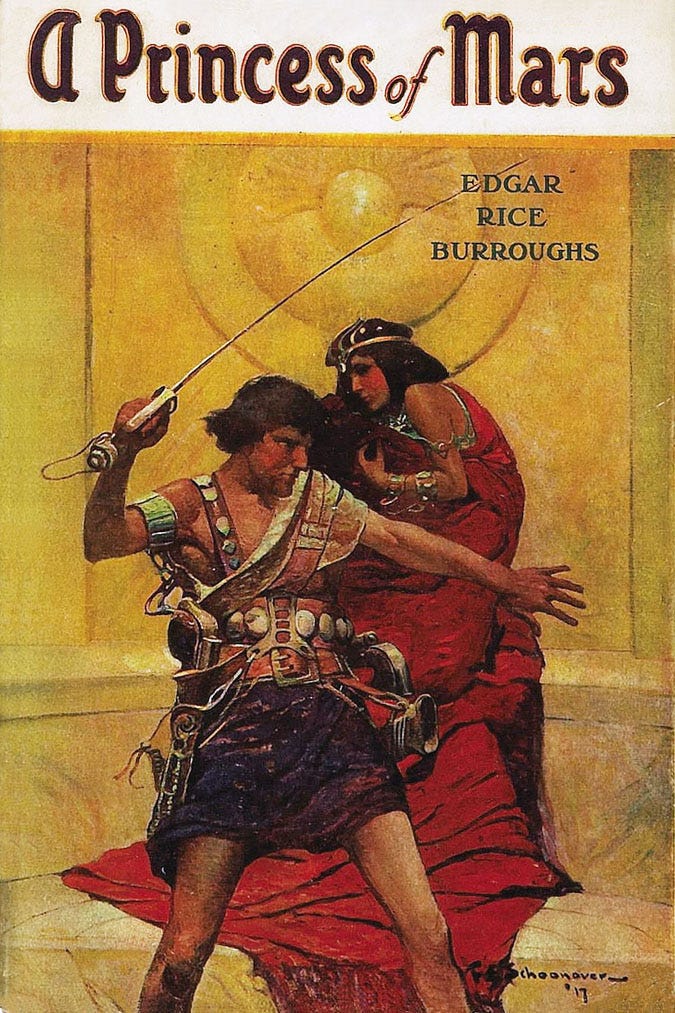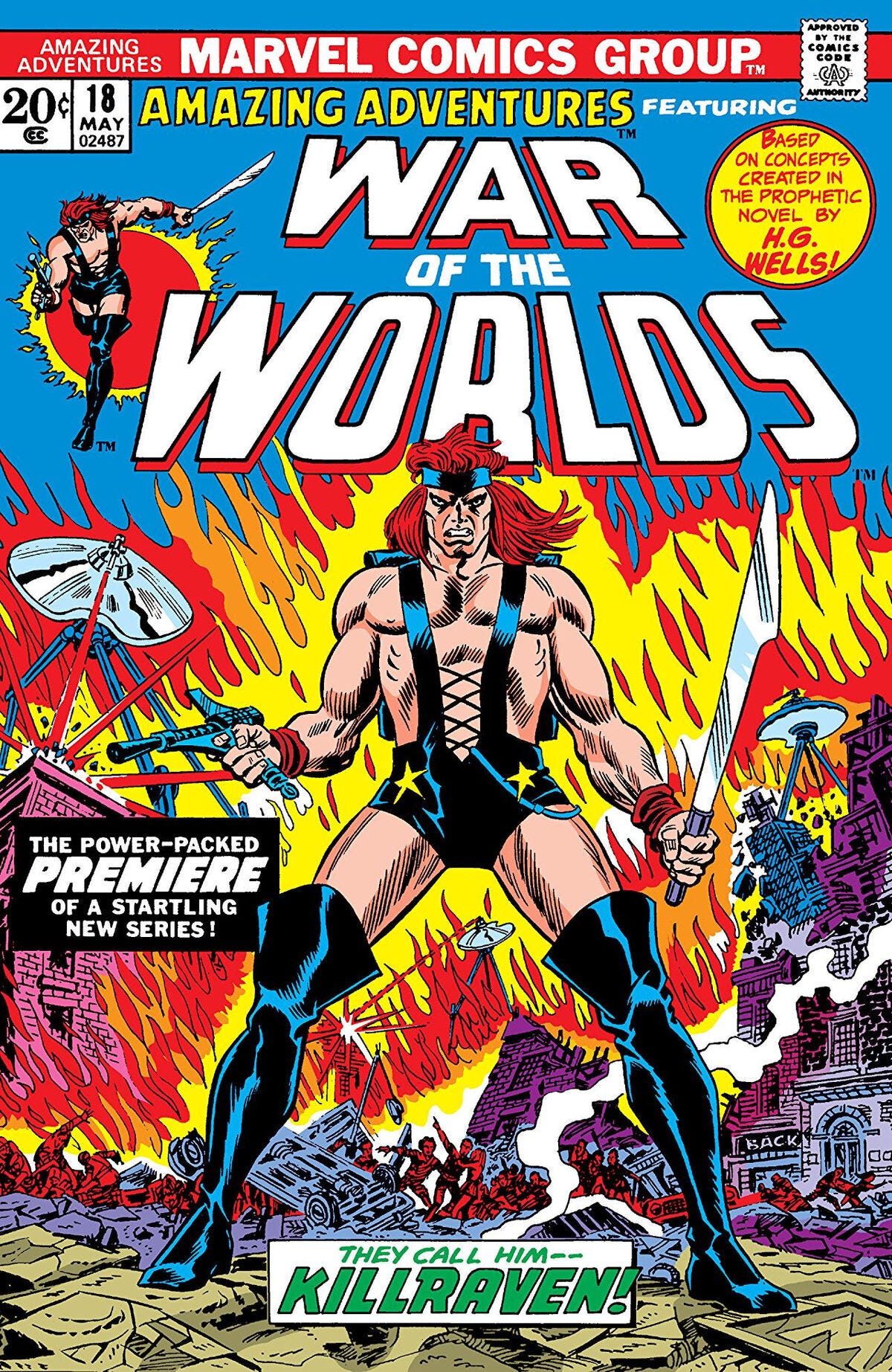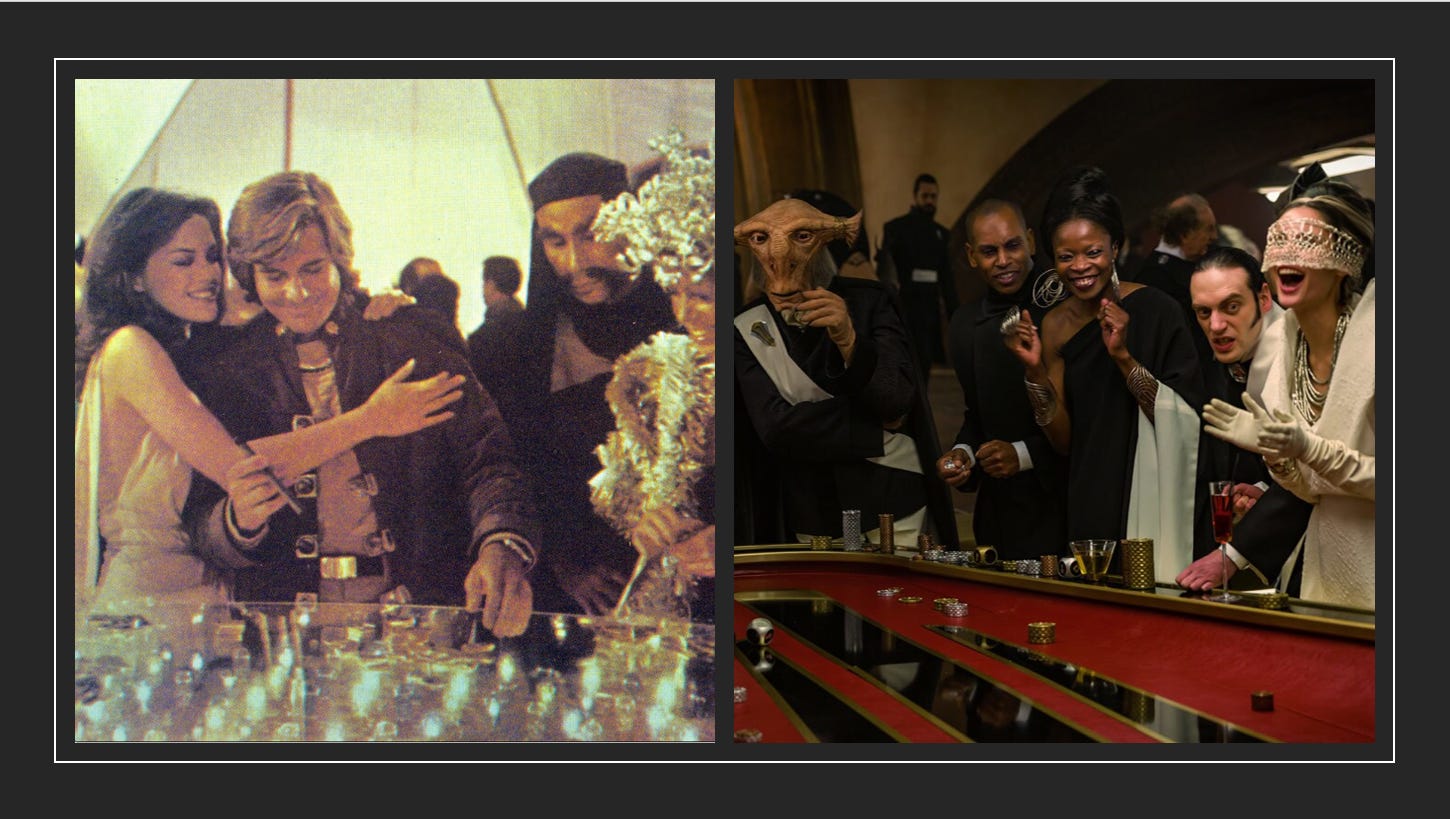What is the state of Planetary Romance?
Planetary Romance is one of the oldest sub-genres of Science Fiction, having emerged fully made from the imaginations of Edgar Rice Burroughs, Leigh Brackett, and Robert E. Howard in the early 20th Century. Prior to the emergence of the space program and the dominance of engineers and science writers in Science Fiction publishing during the John W. Campbell era, it was the Science Fiction genre. Sadly, at least for fans of the genre, the Campbell era largely killed the genre as a dominant force in fiction and unlike its sister genre of Sword & Sorcery it has never really recovered from being pushed aside.
Even as what type of story constitutes Science Fiction has expanded to include the more personal tales of writers like Connie Willis and Susan Palwick, there is still a plausibility bias in a lot of modern Science Fiction. This would be tolerable if Planetary Romance had merely been shifted from Science Fiction into Science Fantasy, which is what it always was anyway, but that hasn’t happened to the extent that it deserves and the genre languishes in the modern day looking for an audience.
There was a brief moment when the genre had the opportunity to recapture the imagination of readers young and old. In the 1970s and 80s there was a small explosion of Planetary Romance material, an explosion that paralleled the Sword & Sorcery explosion of the same period. The tales of Edgar Rice Burroughs’ Barsoom were republished with beautiful covers painted by Michael Whelan. Marvel and DC published Planetary Romance comic books ranging from adaptations of Burroughs’ John Carter to new and exciting titles like Killraven and Warlord. Film audiences were also in for a treat as new Planetary Romances like Star Wars and Flash Gordon hit the theatres, both descendants of the original Flash Gordon serials and comic strips.
Because one of the films took the inspirational material seriously and without irony and the other did so with tongue firmly in cheek, the genre presented a confused Janus image to the public. Was it fun adventure or was it adventure to be made fun of? Both? All of this was possible.
This Planetary Romance explosion ended fairly abruptly at around the same time that the Sword & Sorcery boom dwindled. There were a host of reasons for it. There weren’t enough new writers creating content in the genre that spoke to the issues and mores of the time. While one can love reading the Edwardian virtue of John Carter as a character, one might also want tales where the women have more agency, though to be fair the Princess in Burroughs’ Venus tales is far more competent than the male lead.
Additionally, as with Sword & Sorcery, much of what was produced in literature and film was a pale shadow of what came before. Just as the Cinematic Corny Conan Copies (Deathstalker and The Barbarians I’m looking at you) failed to capture the essence of the genre, films like Gor were exploitation instead of celebration. They were genre films without the heart of the genre.
Regardless of the reasons for the decline, and I’ve only scratched the surface, the late 80s and 90 were a time of either no news, or bad news, for fans of Planetary Romance. This shifted in the early 2000s, and has continued into the 2010s and 2020s, as the kids who grew up during the prior boom came of creative age and began to create some new content for fans of the genre. Sadly, these fans have been experiencing a roller coaster ride of positive news and worrisome news ever since.
The modern state of Planetary Romance is one of inconsistency and chaos.
What is Planetary Romance?
For the uninitiated, Planetary Romance stories are a kind of speculative fiction that straddles the line somewhere between fantasy and science fiction. The stories are fantasy in that they often incorporate magic systems, princesses, and mystical experiences. For the modern reader, they might only be considered Science Fiction in the sense that they often take place on other worlds.
The genre was largely created by the Edgar Rice Burroughs novel A Princess of Mars featuring Burroughs' second most famous character John Carter of Mars. In the story, readers are introduced to John Carter. He is a Civil War veteran who is of indeterminate age and possibly unaging who has gone West to mine precious metals and discover his fortune. Things don’t go so well and he is attacked, in response to this attack John Carter mystically transports himself to Mars (or as the Martian natives call it, Barsoom) after being near fatally injured. There is no explanation of how this process of transporting his consciousness from one planet to another works, just that he does so through pure force of will. While on Barsoom, John Carter encounters alien races, falls in love with the most beautiful woman in the universe, and participates in large scale war on a dying planet.
A Princess of Mars established the basic tropes for the genre, tropes which have been used to great success in literature and film in everything from Leigh Brackett's Eric John Stark stories to George Lucas' Star Wars films. There is a reason that Brackett was selected to write a draft of Empire Strikes Back and that reason is that Star Wars sits firmly in the genre of Planetary Romance -- as does Flash Gordon.
Fritz Leiber, in issue #2 of the 1961 fanzine Ancalagon, commented on the writings of Edgar Rice Burroughs and classified them as “Swords & Superscience” or “Atlantis on Mars.” This was at the time when Leiber and others were attempting to define various sub-genre of fantasy. In fact Leiber coined the term Sword & Sorcery in Ancalagon #2 and reiterated this statement in the AMRA fanzine shortly thereafter. You can see in Leiber’s discussion the challenge of classifying the genre as it is no more and no less Science Fiction than similar Science Fantasy tales.
The key components of Planetary Romance stories are:
They take place on another world or other worlds (sometimes the center of our own).
They involve some form of Super Science. In the case of Burroughs radium guns, atmosphere generators, and the manipulation of the “ninth ray.”
This ray is separated from the other rays of the sun by means of finely adjusted instruments placed upon the roof of the huge building, three-quarters of which is used for reservoirs in which the ninth ray is stored. This product is then treated electrically, or rather certain proportions of refined electric vibrations are incorporated with it, and the result is then pumped to the five principal air centers of the planet where, as it is released, contact with the ether of space transforms it into atmosphere. — A Princess of Mars, Chapter XX
They contain some element of romance.
They feature lost civilizations and alien races.
The stories take place either at the same time they are written (Edgar Rice Burroughs’ Barsoom and Venus tales), or in some distant past.
All told, tales of Planetary Romance are more about adventure, romance, and the unknown than they are about science or political commentary. There are exceptions with regards to political commentary, Leigh Brackett’s Eric John Stark is a key example here.
There are many wonderfully written novels and stories within the genre, but there is also material some consider to be offensive drivel. I can remember stumbling upon the Gor novels of John Norman because of some basic underlying similarities between it and Burroughs' Martian novels.
Traditional Planetary Romance novels advocate Edwardian sensibilities about virtue and heroism, much like Arthur Conan Doyle's The Lost World (an interesting experiment is to read The Lost World and The Heart of Darkness back to back), and love is presented as an ideal akin to the medieval concept of Courtly Love. The heroes of Burroughs' novels nearly swoon with affection for their beloved, a beloved who is perfect beyond compare. The Gor novels turned this on their head as Norman's novels were erotica disguised as Planetary Romance. Let's just say that this came as quite a shock to my 8th grade self, and to this day I don't have an appreciation for the Gor novels.
Needless to say, Planetary Romance is a rich and important sub-genre of fiction and one that I highly recommend.
The Withering of the Genre and the Roller Coaster of Quality in the 21st Century
Perhaps it’s fitting that the 21st century is a time when the Planetary Romance genre is riding a roller coaster of quality. We are living in the future that Science Fiction imagined and we know much more about scientific processes. The planets are both more and less a mystery to us as people than they were in the past. We know that the Canals of Mars aren’t canals. We know that the atmosphere of Venus will kill anyone attempting to be on the planet’s surface (if the pressure doesn’t kill you first). We know that planets cannot travel from solar system to solar system, or galaxy to galaxy (sorry Ming).
Yet, it is a genre I love and I’d love to see more tales written and told in the genre.
Some of the roller coaster peaks in the 21st Century have included:
The University of Nebraska Press editions of Edgar Rice Burroughs' Martian Stories, Moon Stories (the inspiration for Killraven), and Venus Stories.
The Planet Stories line of books by Paizo Press.
Chris Roberson's Paragaea
Jon Favreau being selected to direct the John Carter movie. Even though he seemed overly influenced by the art of Frank Frazetta, and not enough influenced by the art of Michael Whelan or Frank Schoonover, Favreau was a great choice...before he had to leave the project and make an awesome version of Iron Man that launched the Marvel Cinematic Universe.
The release of an excellent Flash Gordon role playing game based on Savage Worlds from Pinnacle Entertainment Group.
A new John Carter of Mars role playing game from Modiphius Entertainment.
The release of an excellent film adaptation of A Princess of Mars by Andrew Stanton (more on that below).
Various Star Wars properties ranging from Rebels to The Mandalorian. As great as Andor is, it’s not Planetary Romance which is one of the reasons some don’t feel it quite vibes with Star Wars.
Some of the roller coaster valleys have included:
The selection of Robert Rodriguez to direct the John Carter of Mars movie. I'm a Rodriguez fan, but the thought of his "lowest budget possible" mentality underlying a John Carter film just rubbed me the wrong way. Sure his Harryhausen homage was fun, but...John Carter in DV Cam isn't my idea of cool.
The three prequel Star Wars films which hinted at how good Planetary Romance can be, while simultaneously showing us how bad it can be.
The three sequel Star Wars films which once again hinted how good Planetary Romance can be, while showing that “deconstructing” the tropes using the plot of the first few episodes of the original Battlestar Galactica don’t quite mix.
The Flash Gordon series of the 2010s.
Fantasy author Scott Lynch released a free web-book in the early 2010s of exactly the kind of fiction I wanted to see. Lynch e-published Queen of the Iron Sands and I had high hopes for it. He's released the story as a "serial novel" and thus simultaneously paid homage to the classic of Planetary Romance and the serials of the early 20th century. Sadly, he never finished the tale and it languishes with a “to be continued.” It has an ending, of sorts, but I hoped for so much more.
As noted above, a lot of the news -- good and bad -- for Planetary Romance fans centers around a John Carter project. One that resulted in a huge financial loss by Disney because of a complete failure of marketing among other things. With Andrew Stanton at the helm, and Michael Chabon attached to the screenplay, it seemed to have potential to be a great success, but it was not to be.
Stanton hadn't done a project like John Carter before, but that’s not necessarily a bad thing. Doug Liman hadn't directed a spy movie before Bourne Identity, but it was extraordinary. What did matter is that Stanton’s history of working at Pixar meant that he made the film the Pixar way, and that meant reshoots…expensive reshoots.
There have been many more Planetary Romance projects in the past few years and yet few seem to vibe with the public at large. What are some of your favorites and why do you think the genre is withering away when it has so much potential?









Maybe there could be a resuscitation of this sub genre by way of romance that crossed into Faerie as a way of doing other worlds without the sf aspect of it? And would time travel romance touch close enough to be considered of parallel bent to this?
PS Your post made me blow the dust off my Blu-Ray of John Carter (of Mars) and watch it in full with my son. Thanks for that!
Excellent article, Christian - I found it really interesting!